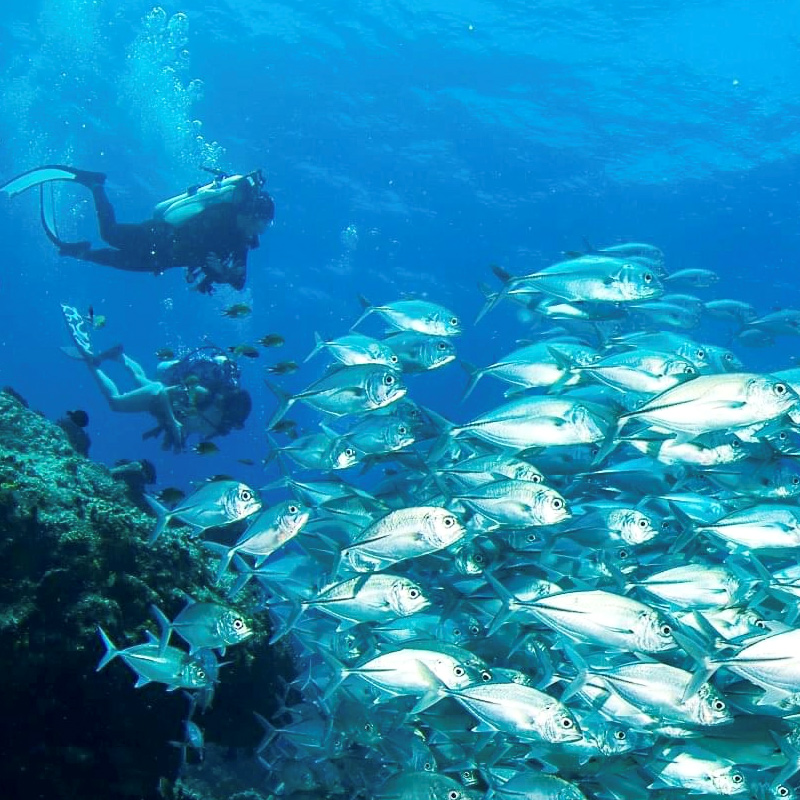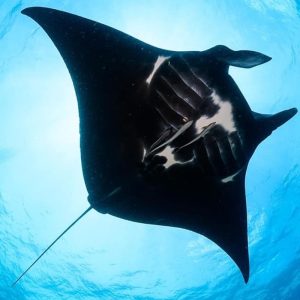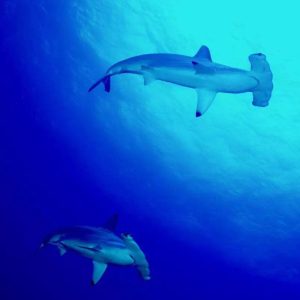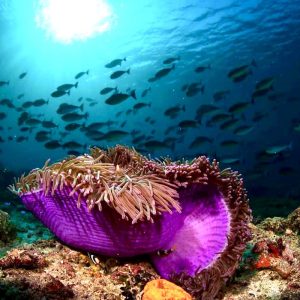Description
Diving
Day 1
Pick up by staff at the airport or hotel
Group transfer to the boat
Meet the crew & welcome briefing
According to the sea situation, we may do a check-dive after departure in the afternoon.
Day 2 to 8
3-4 dives each day, including night dive.
Day 9 -2dives According to flight safety requirements, divers are required to rest for 24 hours before the flight
Day 10
Check-out from the boat before 12:00. You will be transported to the airport for a domestic flight back or to a local hotel if you are extending your stay.
Sample itineraries and maps are for illustrative purposes only. The exact route and sites visited are subject to change based on local regulations, guest experience, weather, and logistics, and are at the Captain’s discretion.
Panta
Maumere Strait
Komodo
Banta
Bajo
Ambon-Banda-Alor-Komodo, Indonesia
Itinerary – 10 Days & 9 Nights
• Embarkation: Ambon (AMQ)
• Disembarkation: Bajo (LBJ)
Following is a sample of dive sites which we may visit during your time aboard MV SEAISEE I.
The safety of our guests is paramount, and we always do our best to offer diving at alternate
locations, should we be unable to visit those sites listed below.
Guests are welcome to suggest preferred dive sites to the Cruise Director. He will be happy
to accommodate guests’ wishes, providing it is possible and the schedule allows for it.
Dive sites we visit include but are not limited to:
Ambon Island
Situated 7 miles off the southwestern coast of the island of Ceram, in the heart of the
Moluccas, are the famous dive sites of Ambon, which will be our first stop. It offers world class
muck diving, diverse marine ecosystems and dramatic seascapes.
Pintu Kota This area boasts incredible underwater architecture, with a massive archway
decorated with colourful soft corals hanging from its walls to ceilings. Many white and red
polyps red sea fans are dotted along the bottom, whilst shoals of fusiliers, bannerfish, and
surgeonfish feed along the steep walls covered with huge barrel sponges.
Twilight Zone This renowned muck diving spot in the harbour of Laha is great to explore at
night, or during the day. Amongst the detritus, countless species of nudibranchs, shrimps,
crabs, and dwelling fish are waiting to be discovered. During your treasure hunt, you may
come across flamboyant cuttlefish, ornate ghost pipefish, donald duck shrimps, tiger shrimps,
starry octopus, and even rhinopias.
The Middle Banda Sea Islands
This group of islands boasts fantastic diving, with up to 40 metres of visibility.
Currents can be strong around these small islands in the middle center of the Banda Sea,
therefore sites will be chosen on the best daily conditions.
There are various dive sites that we may visit:
Pulau Bingkudu, Pulau Penyu, Pulau Kadola, Pulau Mai, Karang Skaro
All the above islands with reef is the big chance to see the hammerhead sharks.
Gunung Api Island
Famous for its high population of chinese sea snakes, this volcanic island rises up from the
depth of the Banda Sea and offers dramatic seascapes with steep soft coral encrusted walls
and huge barrel sponges. This oasis of life attracts large pelagics such as dogtooth tunas,
rainbow runners and also look out for scalloped hammerhead sharks or silvertip sharks
cruising the deep waters.
Wetar and Reong Islands
We will make 3 dives here and spend the day exploring a variety of sites that the islands offer.
The walls are covered with huge sponges and soft corals. Drop offs and colourful reefs with
healthy marine life including sightings of eagle rays and turtles. However, currents can be
fairly robust, particularly in the channel between Reong & Wetar, therefore divers are advised
to carry reef hooks and stay within close range of their buddy and/or the dive guide.
Pantar Strait
The Pantar Strait is known for both critter diving and stunning reef walls where larger pelagic
species can be spotted. Some stronger currents are to be expected but the currents bring the
nutrients which feed the reef and the inhabitants of the strait. There are a variety of dive sites
here and we chose the optimum sites based on the conditions of the day.
The French Man’s Window A wall dive site in front of Alor’s Divers Resort covered in a
fantastic array of soft corals. Look closely to find a wide variety of nudibranchs; remember to
watch in the blue as well as something big might swim pas.
Pak Yan’s Village An excellent muck diving spot to find Pegasus sea moths, dragonets, scorpion
fish, ghost pipefish and bargibanti seahorses too.
Clown Valley Hundreds, if not thousands of anemones cover the shallow reef slope on the
south side of Pulau Pura, all hosting the clark’s anemone fish. A stunning site but thermoclines
can be expected so be prepared for some chilly water that may attract thresher sharks.
The Arch Located at Pulau Reta, The Arch is famous for its overhangs and fissures providing
stunning topography, as well as a home to schooling fusiliers and colourful anthias. Larger
pelagic fish, including black tip reef sharks have been spotted here too.
Mucky Mosque An iconic muck dive at the entrance of Kalabahi Bay where the attentive eye
can find paddleflap & frondosa’s rhinopias, as well as ornate, robust and even halimeda and
velvet ghost pipefish, frogfish, bobtail squid, long-arm octopus and for the lucky ones:
wunderpus.
Maumere Bay
It is recommend Maumere on the northern coast of Flores specially if you are interested in
small rare critters, it is well worth a visit. There are several dive sites on the coast good for
muck diving where you find frogfishes, mimic octopus and special nudibranchs. The area is
also known for a lot of endemic species, actually it is said that the photographer Rudie Kuiter
catalogued in Maumere Bay alone over 1200 species of fish, including some new to science!
Maumere Bay is very beautiful, surrounded by volcanoes and other mountains. The islands
on the outer edge of the bay have nice coral reefs with steep walls covered with hard corals
and large sea fans. Pulau Besar is the largest of the islands with high mountains and together
with Dambilah and Pangabatang it forms a barrier to the water flowing in and out of the bay.
For this reason the bay is calm at most times and dolphins, sperm whales and whale sharks
like to come here. Dolphins and pilot whales are common and can be seen during the whole
year, mostly if the sea is calm. Sperm whales can be seen during the rainy season from
November to December. The best time to see whale sharks seems to be April and May but
they are around the whole year, it seems, though, that if there are waves they are very difficult
to spot from the boats.
Pulau Besar, Dambilah and Pangabatang One of the few barrier reefs in Indonesia occur
here at Pulau Besar (another one is found in the Togian islands and Sumbawa) where the reef
also forms a large lagoon in the east. The group of islands can be reached from Maumere or
Wodong by boat.
Labuan Tur This dive site on the west coast of pulau Besar is supposed to be nice.
Maragajong You start the dive in a kind of small valley with huge coral blocks which are
cleaning stations for sweetlips and batfish. With some patience you can see the sweetlips
opening up their mouths and the cleaner wrasses flittering in an out of it. Then you swim over
the reef edge and reach a steep slope. The visibility here was incredible! The huge gorgonians
fans and barrel sponges while out in the blue mackerels and small tunas passed by and a
large schools of long-jawed mackerels (Rastrelliger kanagurta) were opening their mouths
always in synchronous movement. Just beautiful!
Dambilah This dive is perfect for relaxing, taking some time to search for small animals but
at the same time enjoying the nice underwater landscape like the coral gardens at the top
and the soft corals on the slope.
The Channel / Fish Soup This is one of the favorite dive sites in the area, the landscape is
very impressive with huge Gorgonian sea fans, a dramatic precipice where sharks, jacks and
rays congregate and a beautiful coral garden to finish the dive. A place you come up and out
of the water always with a smiling face and a “Wow – I want to go diving here again!”
Pangabatang (Pangahbatan) North Normaly diving here is quite easy, so it is a good place
for beginners, but if there is a strong current you have to stay close to the reef and finish the
dive before you are swept around the corner into The Channel. Your start on a beautiful coral
garden with white sand and large coral blocks and then you continue on a slope nicely
covered with healthy soft corals and gorgonian sea fans. There is a good chance to see eagle
rays or sharks, but you should also check out the corals for shrimps and nudibranchs. To finish
the dive you go up to a shallow coral garden, often there are marine turtles and even
sometimes banded sea kraits.
North Komodo
Two celebrated dive sites await you, just north of Gili Lawalaut Island. Crystal Rock and Castle
Rock are both incredible locations, boasting the key elements for any impressive dive site: a
wide variety of healthy corals covering the reef, plus tons of fish – both big and small and all
sizes in between! There are more exhilarating dives in this area, Aquarium, Coral Garden, Gili
Lawalaut Lighthouse and a bit more to the northeast Batu Montjo, along with good night
dives on healthy hard coral reefs off the island of Gili Lawa Darat. Between the dives there is
a chance to visit Gili Lawalaut Island and take a short trek to the top of the hill for a wonderful
view over the Komodo-Flores channel.
Crystal Rock The rock jutting out of the surrounding crystal clear waters explains how this
site got its name. But what is truly memorable here are the large schools of fusiliers and
anthias flitting over the gorgeous soft corals and impressive table corals. In the deep blue,
you can also see at times large tuna, mackerel and other fish schooling around a small mound
to the northwest. A lone eagle ray is often spotted here cruising in the currents.
Castle Rock Castle Rock is a submerged pinnacle situated a kilometer further north from
Crystal Rock. Its exposed location means strong currents, but experienced divers will love the
thrills to be had on this dive. In fact, the main action comes from watching the staggering
amount of fish such as batfish, groupers, midnight snappers and impressive schools of fusiliers
and surgeons whipping past. Of course, divers aren’t the only ones interested in the huge
amount of fish here, which explains the giant trevally as well as whitetips, blacktips and grey
reef sharks hunting around for their next meal.
Batu Montjo In the northwest of Komodo Island, Batu Montjo is a perfect site to dive as a
third dive with a amazing formation of hard corals in the shallows. Many boulders covered
with gorgonian sea fans lie in between the white sandy slopes. This combination of hard corals
and gorgonian sea fans with all the fish swimming in between the coral garden makes for a
perfect relaxing afternoon dive. Leaf fish, mantis shrimp, jaw fish and turtles are often seen at
this site.
Gili Lawalaut Lighthouse On the north of Gili Lawalaut there is a lighthouse at the end of a
long reef. When the tide is going down the dive starts on the reef with a drift to the corner.
At the corner there are big schools of batfish, snappers, surgeons with napoleon wrasse and
reef sharks also hanging around.




